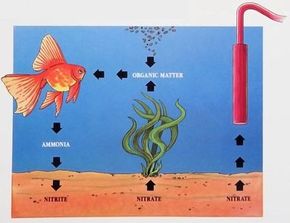Aquarium Filter Designs: Sponge Filters
Another kind of biological aquarium filter that is commonly used in aquariums is the sponge filter. Although varying somewhat in appearance, all sponge filters work the same way.
Water is pulled through the sponge, which is colonized by nitrifying bacteria. Most sponge filters use a single lift tube and air bubbles to draw water through the sponge, although some large models can use a powerhead instead.
Advertisement
There are specific reasons for using sponge filters. For example, if you keep a sponge filter in a tank that already has a biological filter, it will develop its own colony of bacteria. The sponge filter can then serve as an emergency biological filter in another tank.
If you need to set up a small tank to treat a sick fish or a quarantine tank for new fish, the sponge filter can provide immediate biological filtration for that tank. This eliminates the usual break-in period.
For those who breed fish, the sponge filter is also very useful. Often at some point, young fish need to be taken out of the adult tank and put into a fry tank, which contains only juveniles of the same size. Sponge filters provide instant biological filtration for the fry tank.
It is safe for the baby fish because there is no dangerous filter intake, as with power filters, and the micro-organisms on the surface of the sponge even provide an additional food source for the growing fish.
It should be mentioned here that all mechanical filters eventually function as biological filters. That is, the mechanical filter material and the granular activated carbon will become colonized by nitrifying bacteria.
However, by the time the mechanical and chemical filtration materials are fully functioning biological filters, they will need to be removed and replaced as a normal part of filter maintenance.
The only exception to this is when foam or sponge is used as the mechanical filtering material. Then, the material can be squeezed gently several times in a bucket of aquarium water and placed back in the filter. Most of the nitrifying bacteria will survive this procedure and reform the colony.
Because outside power filters and canister filters have more room inside, there is often space for special materials that can provide biological filtration. Ceramic noodles, rings, and other shapes offer lots of surface area for nitrifying bacteria to colonize. These items can be rinsed in aquarium water without removing or killing the bacteria.
Undergravel filters or sponge filters provide the most efficient biological filtration, but if such units are impractical or unavailable, using an outside power filter for biological filtration will work. For very large aquariums, two or more outside power filters or canister filters can be used.
See the next section to learn to ensure your aquarium water is at an optimum temperature.
